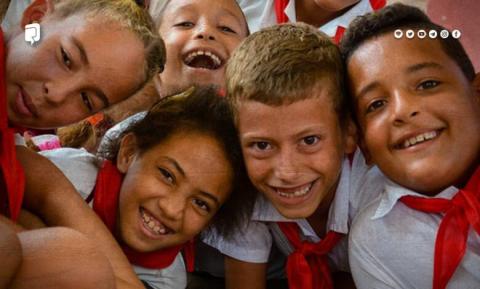


Cuba has launched a new school year, an endeavor that has required creative solutions and the commitment of all sectors to confront complex realities.
Minister of Education, Dr. Naima Ariatne Trujillo Barreto, highlighted the dedication and ability of each territory to find its own alternatives and prioritize resources. “Each educational project must resemble its territory, its conditions,” she affirmed, underscoring the system’s flexibility.
A prime example is Santiago de Cuba, which has achieved 99% teacher coverage and implemented various initiatives to secure technological resources. While the minister acknowledged that conditions are not uniform across the country, she emphasized unity: “We have seen workers from all sectors come together. I think that is something we were able to appreciate everywhere.”
Local and Municipal Responses
The search for solutions at the municipal and community levels has been a defining feature this year. The minister explained that both the improvement of the educational system and growing needs have fostered new alliances. “We have also learned to work in networks and to find solutions within municipalities. This provides a more stable response,” she said.
This effort has fostered unprecedented partnerships for school maintenance. “Today, we can find a rural school supported by a cooperative, families uniting to contribute, or companies in certain sectors providing assistance,” Trujillo noted.
A moving example is Guantánamo province, which—despite climate-related challenges—will reopen its last pending educational institution on September 1.
Industrial Challenges
Yamilin González Milian, from the Ministry of Industries, outlined the difficulties in supplying essential items such as notebooks and school uniforms. Despite a demand exceeding 3.6 million garments, the industry was only able to produce 2.2 million, facing energy shortages. “We have worked in close coordination with local governments,” she said.
Priority has been given to the early grades, whose uniforms are already available in stores. Production will continue in September and October to complete approximately 800,000 additional garments.
Meanwhile, Ihosvany Montero García, Director of Wholesale Trade at the Ministry of Domestic Trade, confirmed that his agency has ensured distribution for the start of the school year, with a particular focus on uniforms. Since July 15, more than 80% of garments destined for early grades have been sold.
Each province will host its own opening celebrations, and Dr. Trujillo emphasized: “Education is a social event that touches every family.”
Innovations for the Future
Among the novelties of this academic period, the minister highlighted the implementation of the third stage of educational reform, which introduces significant changes. Materials and textbooks are expected to arrive gradually, and special emphasis will be placed on communication skills and addressing socially relevant issues.
The new school year in Cuba stands as a testament to the nation’s ability to find solutions even in the face of adversity. Cuban education continues to serve as a fundamental pillar, reflecting the resilience and commitment of society as a whole.
Translated by Sergio A. Paneque Díaz / CubaSí Translation Staff